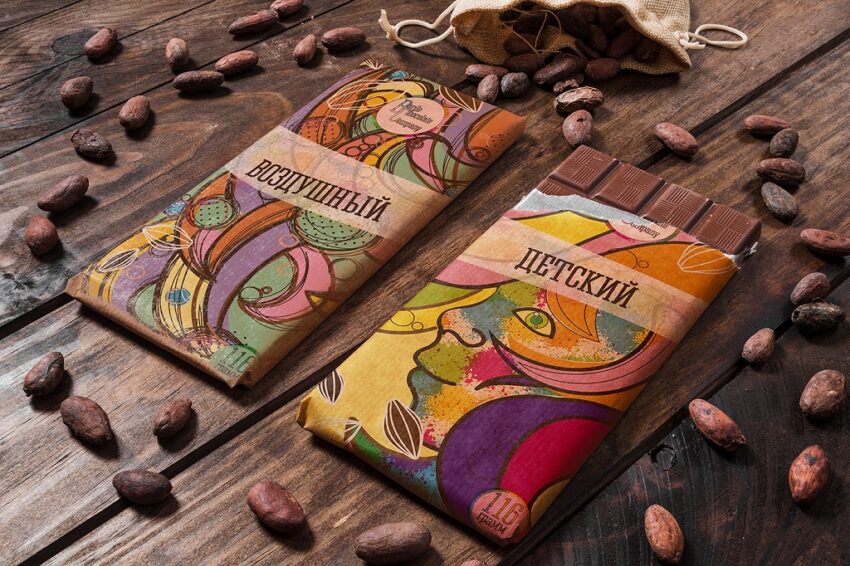Have you ever walked into a boutique chocolate shop and felt yourself instantly drawn to a specific chocolate box, despite not knowing what lies within? What is it about the elegant gold embossing or the unique, abstract design that caught your eye and influenced your choice? Why does packaging matter when what we are actually interested in is the taste of the chocolate inside? In this blog post, we will explore and decode the importance of quality and design in chocolate packaging.
The journey of craft chocolates starts with cacao beans at a farm and ends in the hands of consumers. In between, there’s an artful combination of many processes- fermentation, drying, roasting, grinding, conching, tempering, and molding. However, there’s one more step that plays a crucial role in chocolates’ sales and popularity. It’s the packaging. The choice of colour, design, texture, and even the size of the package can impact consumers’ perception and taste before they have even taken a bite.
Why Packaging Matters
Packaging is much more than just a protective cover for chocolates. It’s an integral part of the product experience. High-quality packaging gives the impression of a high-quality product. It captures the attention of consumers and encourages impulse purchases. Moreover, packaging conveys the brand’s story, passion, and ethos. It’s a tactile and visual experience that supports the brand promise and adds value to the product.
Furthermore, the quality and design of packaging have influenced consumer behaviour to a great extent. Unique packaging is a great way to differentiate one’s product from competitors in the fiercely competitive chocolate market. Customers often see elegant packaging as an indication of superior product quality.
Additionally, packaging material plays a crucial role in preserving the freshness, aroma, and taste of chocolates. Poor packaging can lead to unsavoury chocolate-to-packaging interactions and product spoilage.
The Power of Design
A study by researchers at the University of Miami and California Institute of Technology showed that a product’s packaging influenced how tasty the food was perceived to be. Chocolate packaging is just as much a work of art as the chocolate itself. It sets the exquisite mood and anticipation that enhances the experience of savouring the treat.
Designing chocolate packaging is a unique blend of artistry and science. It often involves drawing upon not just graphic design principles but psychology, cultural and geographic influences, and the consumer’s personal preferences. From the selection of an appropriate colour palette to a compelling typography, every design element is strategically chosen to create a visually appealing persona.
Eco-conscious consumers are now seeking packaging that is as environmentally friendly as it is beautiful. This shift towards sustainable design solutions has led to the creation of innovative, biodegradable and recyclable packaging.
The Pros and Cons
The pros of investing in quality packaging design are evident: differentiation from competitors, increased perceived value, preservation of product quality, and captivating storytelling capabilities to secure customer loyalty. However, it’s also essential to consider the cons.
One of the significant downsides is the cost. High-quality, customized packaging can be expensive, and not every chocolate maker can afford to indulge in designer packaging solutions. Poorly designed packaging can confuse customers, erode brand perception, and result in lost sales.
Conclusion
In summary, quality and design in chocolate packaging play a pivotal role in determining a product’s market success. It’s a silent salesman that protects the product, reinforces the brand, and enhances the overall consumer experience. However, the inherent challenges of cost and design complexity should not be overlooked in the pursuit of luxurious packaging.
As consumers and chocolate aficionados, by recognizing the often-overlooked elements that contribute to our choices, we can better appreciate the art and effort behind the products we consume. Even something as seemingly small and irrelevant as package quality and design can, in fact, drastically shape our chocolate experience.


